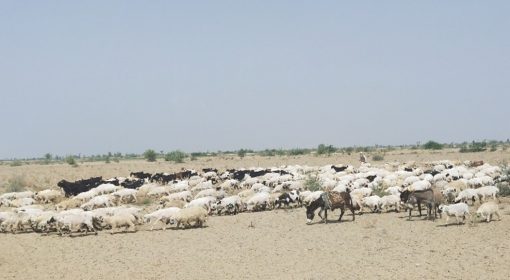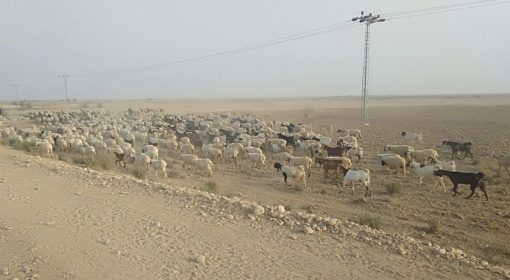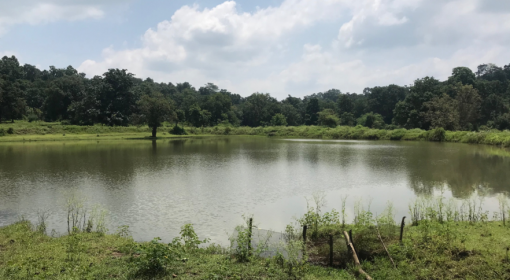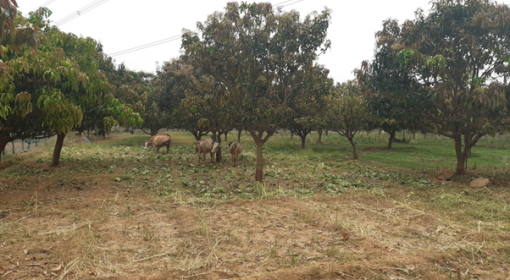by Ashfaque Ahmed Soomro, Abdul Salam and Frank van Steenbergen
Rangelands cover more than 70% of the vast land mass of Balochistan province of Pakistan, and grazing is its most important use. Pastoralism is not only the source of income and subsistence, but part of unique culture too, unique traditions and social fabric which is tied to herding and seasonal migration in search of fodder for livestock. It is not only part of history but also part of future, particularly if Balochistan embraces a productive low water use economy. Here is a quick tour.
In the rangelands in Balochistan there are three grazing systems: nomadic (following a long route), transhumant (moving between high land and lowland) and sedentary (grazing around one’s village). These sizes of the flocks differ. Nomad families are among the poorest – their flock of goats and sheep vary between a minimum of 50 and a maximum of 300. In contrast in some areas, like Musakhail, Kingri, Zhob, Khajoori areas, sedentary families can more than 3000 animals.
Breeds
Pastoralists rear different types of breads. Sheep breads include Shinwari, Karagh, Balochi, Rakhshani, Dumari, Bivirikh, Mengali, Kakari and major goat breeds are Khurasian, Lehri, Teddy, Barbari and Pahari. Given the resilience to harsh weather and disease, the ‘Shinwari’ breed of sheep is most reared by local and nomad pastoralists. The second popular other bread is ‘Karagh’. Although heavy in weight, it is not as resilient as Shinwari and thus, less common to rear. Shinwari is moreover famous for making landi (dried mutton). Before the winter many sheep are slaughtered, and their meat is hung out to dry – to ensure to have protein in the often-harsh winter season. Shinwari landi is preferred – it is claimed to excel in taste. Mostly people use landi in winter season, so the market for Shinwari does not much fluctuate. However, during the Eid Ul Adha, or other occasions, the market rate of a mature Shinwari sheep rises, ranging between PKR. 60,000 to 90,000 (Euro 175-250), depending on size and weight. When Afghan nomads bring sheep in local market of Balochistan, market prices are driven down again.


Grazing challenges
This nomadic nature of pastoralism is confronted with seasonal challenge of fodder, forage and water. When rangelands are completely grazed, local pastoralists usually go to lower lands/downstream for grazing, or they collect fresh fodder from the orchards against labour or on cash. Rotational grazing management could be one of the strategies, but at present neither nomad, transhumant herders nor most local pastoralists use this practice. There is no active management of rangeland besides restricting access to outsiders. Usually the rangeland is used till the fodder is all gone. Given the nature of nomads, it may be difficult for this group to practice rotational grazing, but for permanent pastoralists it is a possibility. Herders in Balochistan are however not into rangeland conservation at present, either through tree planting, avoid overgrazing through rotations, better water retention or reseeding. Usually, rangelands are grazed for a period of three to four months. In the remaining months, herders struggle to secure fodder. To deal with it, most of the pastoralists, collect tree leaves, conserve them and use them as fodder for their animals in dry periods. Some also collect wasted fruits and conserve them to feed their animals in lean times. Those who keeps large flocks of more than 500 or 1000 animals, also purchase dry and green fodder from markets, but it is costly. One mature sheep eats the fodder of around PKR. 5000 to 7000/- a month (Euro 15-25). Some also say that herders need to be motivated to focus on smaller but high value, climate-smart herds that can better withstand the arid conditions of Balochistan and use the rangelands smartly.
Local Business and Conflicts
Local farmers welcome nomads to their lands, because they buy the standing crops in large volumes. But there are also nomads-landlord conflicts, primarily driven by issues such as grazing in orchards, unauthorized land occupation, and refusal to vacate the land.
Shelter and Fencing for Animals
Herders, also develop animal resting shed/space beside their houses to protect animals from extreme heat, cold, rain, or snow, but these structures are quite fragile and often do not meet the purpose they are built for. Some herders also fence the area especially important in open grazing areas or near roads and orchards to prevent animals from grazing on cultivated crops or damaging fruit trees as well as avoid road accidents, as well as provide protective shelter to pregnant or ill animals.
Water Ponds in Rangelands
Some local farmers, living together have also developed their small earthen ponds in the rangelands. These fulfil the domestic and livestock water needs. The ponds are usually supplied through a tube well. These ponds can be seen at many places, with children swimming, women fetching water and animals taking rest in and around.

Prepared by MetaMeta Research in support of the Capacity Development Services under the EU funded Revival of Balochistan Water Resources Program, implemented by FAO.



